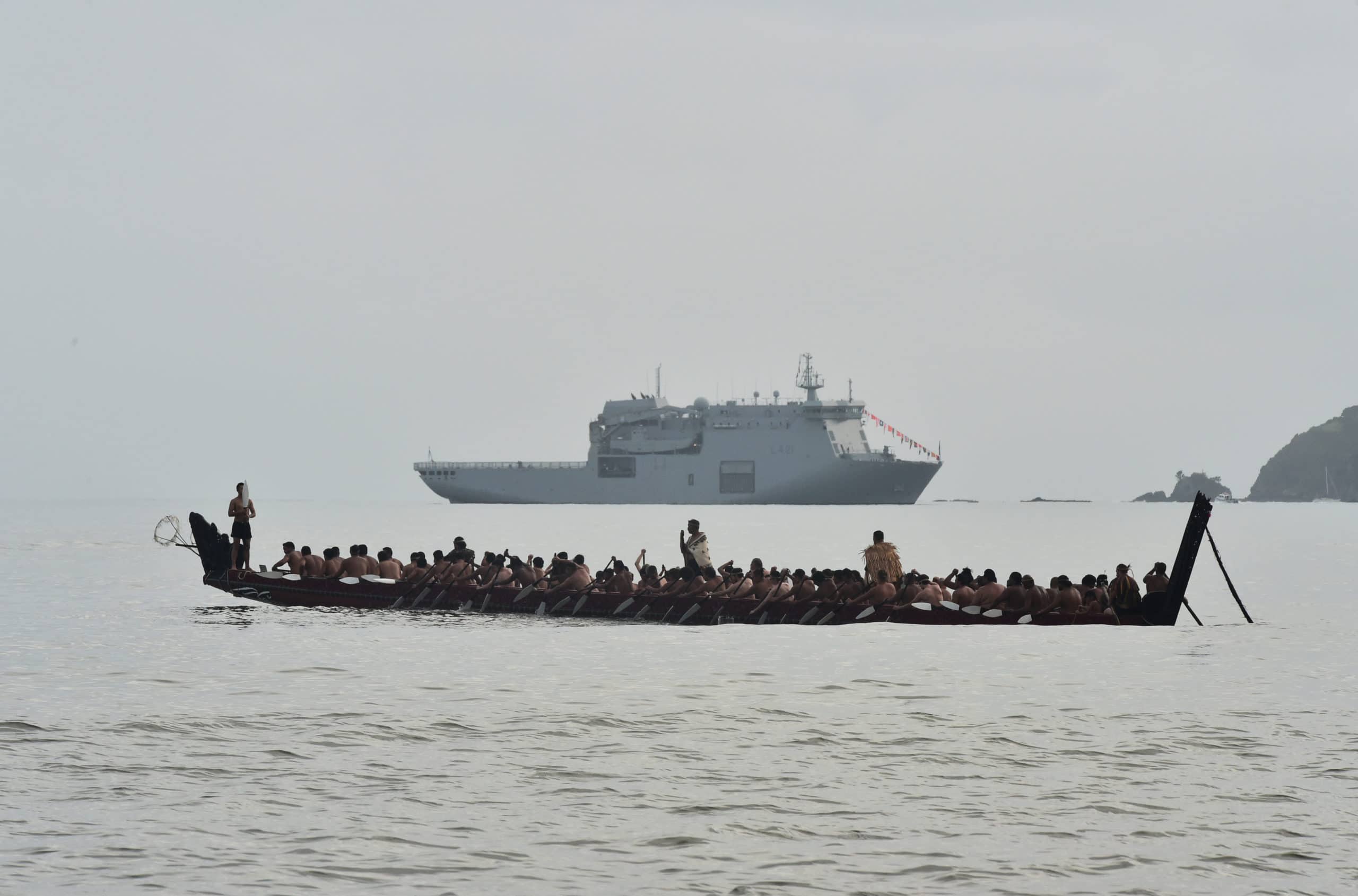Timeline
February 1890
February 1934
Lord Bledisloe in attendance with Prime Minister G W Forbes. It was the first time in 44 years that a warship was present at Waitangi commemorations.
February 1940
Governor General Lord Galway and Prime Minister Peter Fraser were present.
Contemporary accounts refer to a small but dignified ceremony. HMS Leander was the warship in attendance.
The Māori Battalion paraded as part of the ceremony.
February 1947
The band from HMNZS Bellona flew up from Auckland on the Catalina flying boat.
The RNZN inaugurated a ceremony that commemorated the service of New Zealand’s first Naval Governor.
In a simple ceremony sailors raise the Union Flag before a crowd of around 1,200 spectators.
The Chief of Naval Staff Commodore Faulkner made an address; this practice continued until 1959. Although on some years the Governor General did not attend.
February 1951 & February 1952
298 December 1953
HM Queen Elizabeth II was in attendance accompanied by Prime Minister Sidney Holland.
February 1959
The Governor General Viscount Cobham and Prime Minister Walter Nash attended.
February 1960
This was the first time a Royal Navy vessel had been present since 1890 and the very first time a Royal Australian Navy vessel had been present.
The Governor General Viscount Cobham and Prime Minister Walter Nash attended plus Rear Admiral J.M.Villiers of the Royal Navy.
It was the first evening ceremony. All the ships were floodlit at anchor. It was also the last time a Royal Marine Band played at the event.
February 1961
This was the first time Canadian Navy warships had attended.
It was the second time Royal Australian Navy ships were in attendance.
The Band of the Royal Canadian Navy performed the Beat the Retreat Ceremony.
The Governor General Viscount Cobham attended, however, the Prime Minister Keith Holyoake was not in attendance.
February 1963
Also in attendance were Royal Navy vessels HMS Cook, Tapir (submarine), and Britannia.
HM Queen Elizabeth II And Prince Philip the Duke of Edinburgh were present.
Also in attendance were the Prime Minister Keith Holyoake, Governor General Brigadier Sir Bernard Fergusson and Commodore F.D.G. Challis RN.
The ceremony featured for the first time a parade of the Royal Guard which has remained part of the event.
February 1965
Due to poor weather the dress rehearsal on the 5th was cancelled but the next day dawned fine.
February 1966
February 1970
The New Zealand White Ensign was used for the first time having been granted in 1968, but was unable to be used in 1969, due to the cancellation.
February 1972
February 1973
1974
HM Queen Elizabeth II, Duke of Edinburgh, Princess Anne, Prince of Wales and the Prime Minister Bill Rowling were present.
This was the first New Zealand Day celebration which replaced Waitangi Day.
An inter-departmental committee of twenty people met ten times to organise the event – it had previously been organised by a single naval officer.
February 1977
February 1978
February 1979
February 1982
February 1983
Vice Admiral V.C. Leach Royal Australian Navy attended with the Prime MinisterRobert Muldoon and Governor General The Hon Sir David Beattie.
February 1990
HM Queen Elizabeth II and Duke of Edinburgh are present.
Freedom of Te Tai Tokerau accorded the RNZN on 5 February on the Treaty Grounds.
Sir Graham Latimer was the Inspecting Officer.
RNZN personnel were involved in a reenactment of the signing of the Treaty.
A Ceremonial Sunset was separately conducted at 2100.
Twelve RNZN vessels were present.
February 1991
A White Ensign is presented to Tai Tokerau.
February 1992
February 1994
February 1995
HMNZS Canterbury was the only ship in attendance. This was the last time a Leander Class Frigate was used for the ceremony.
February 1996-2001
February 2002
HMNZS Te Kaha is present – first time an ANZAC Frigate is in attendance.
February 2008
His Excellency RT Hon Sir Anand Satyanand is the reviewing officer on the 5th February. Chief of Navy Sweden performs the role on Waitangi Day.

